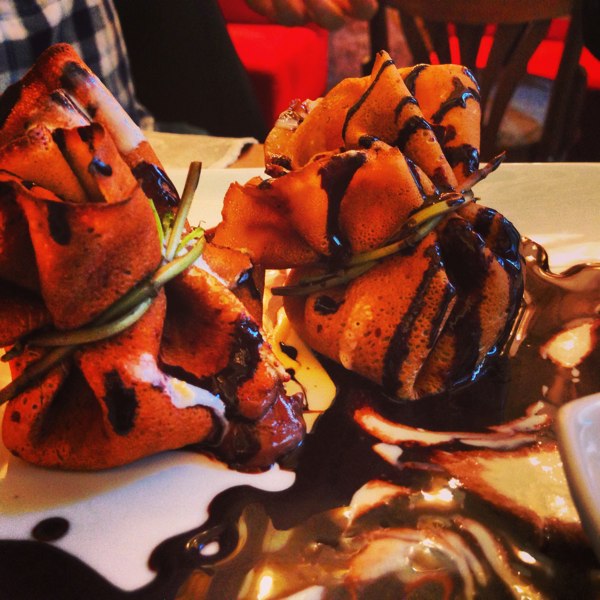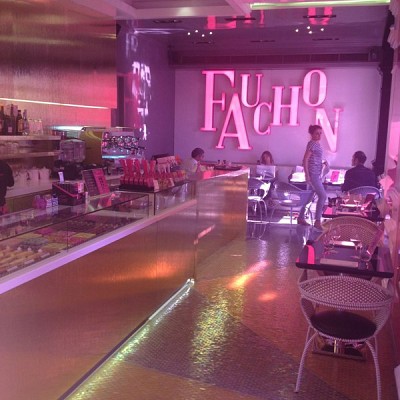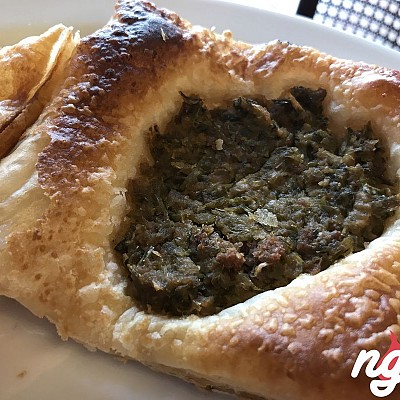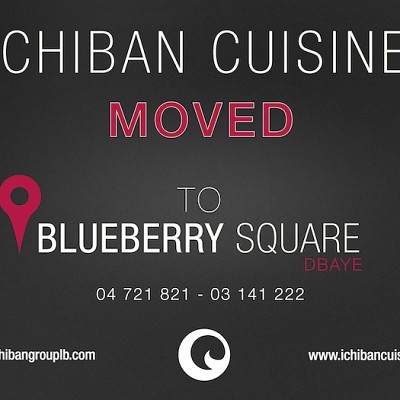Coquelicot, as I already mentioned previously is one of the nicest French Bistros to open in Beirut lately. I tried the place a couple of weeks before its official opening and tried their special dishes - and positively, I enjoyed and expressed my appreciation already. Today I went there again for lunch, the Bouillabaisse way. Bouillabaissea is a dish few are familiar with in Lebanon.
La Bouillabaisse is a traditional Provençal fish stew originating from the port city of Marseille. The French and English form bouillabaisse comes from the Provençal Occitan word bolhabaissa, a compound that consists of the two verbs bolhir (to boil) and abaissar (to reduce heat).
There are at least three kinds of fish in a traditional bouillabaisse, typically scorpionfish (fr: rascasse); sea robin (fr: grondin); and European conger (fr: congre); and it can also include gilt-head bream (fr: dorade); turbot; monkfish (fr: lotte or baudroie); mullet; or silver hake (fr: merlan) It also usually includes shellfish and other seafood such as sea urchins (fr: oursins), mussels (fr: moules); velvet crabs (fr: étrilles); spider crab (fr: araignées de mer) or octopus. Vegetables such as leeks, onions, tomatoes, celery and potatoes are simmered together with the broth and served with the fish. The broth is traditionally served with a rouille, a mayonnaise made of olive oil, garlic, saffron and cayenne pepper on grilled slices of bread.
What makes a bouillabaisse different from other fish soups is the selection of Provençal herbs and spices in the broth; the use of bony local Mediterranean fish; the way the fish are added one at a time, in a certain order, and brought to a boil; and the method of serving. In Marseille, the broth is served first in a bowl containing the bread and rouille, with the seafood and vegetables served separately in another bowl or on a platter.
Before sharing my culinary journey at Coquelicot with you I must state my admiration for the interior decoration of the place, which was designed by the owner's Mazen Kassem's wife, Diana Ibrahim Kassem. Simple and clear yet enchanting, overpowered by old Lebanese stones, small modern spot lights, chandeliers used to decorate a whole wall, red sofas, brown wooden tables with the fabric long runners. My favorite is the green chalk board filled with the customers inspirational feedback... Enjoy the French musical background and let yourself go...
We ordered:
- Carpaccio de Poisson Blanc: white thick layers of white fish from the Sarafande region in south Lebanon, covered with shredded green onions, dill and black pepper and seasoned with lemon and olive oil
- Canard a l'Orange: served with Purée avec Moutarde a L'ancienne and its orange sweet couli that neutralizes the salt of the duck. Soft and tender, melts under your teeth with little crunchy effects of the orange zest. The color and presentation of this dish is majestic.
- Foie Gras Poele aux Pommes: Foie Gras, cooked apples, bread socked in Foie Gras sauce, salad of cabbage and carrots.
- Fresh crab served simply with olive oil and lemon. That's the least good among all the appetizers we tried since it contains a little too much lemon and an over quantity of olive oil.
- Tartare de Viande: The presentation is close to perfect with its crunchy potatoes and black pepper coverage but there is an overdose of onions and oil. I am a fan of olive oil but at Coquelicot there is too much of it everywhere.
- Crevettes au Sesame: Crunchy pieces of shrimps dipped in their Asian sweet special mix (soy, hoisin and sesame oil) and covered with sesame.
Wow! A lot of amazing dishes and Bouillabaisse was not served yet... to get ready for what's to come, the owner served us with an apple sorbet on the house to clear our palates and be ready to jump into the serious stuff. This is known as "Le Trou Normand" or the Norman Hole. Yes, a cold sweet sorbet in the middle reopens the appetite to start again fresh.
Since we're here for the Bouillabaisse, it deserves its section:
Honestly, I am not a Bouillabaisse specialist and won't be giving my opinion and comparisons about this dish, which I found tasty compared to the little times I have tried it. Since Coquelicot is one of the few, not to say the only one, serving it in Lebanon, I suggest you go give it a try.
- Presented with the famous Rouille of an orange color with its many toasted bread slices (eggs, saffron, mayonnaise, garlic, olive oil, black pepper)
- A plate filled with fish: White fish, mussels, shrimps, crab, scorpion fish, sea bass, red mullet and lobster
- An orange sauce of scorpion fish with saffron and spices where you drop the fish inside and slices of bread dipped in the famous Rouille. Wow! It might be complicated but the one who invented it is a genius.
Desserts... We had one of each: They are all mouthwatering, beautifully served and tasty.
- Crêpe au Chocolat for the Nutella lovers
- Apple Crumble
- Pain Perdu pour deux personnes
- Mousse Praline
- Cheese cake
My favorite today:
- The Mustard potato Purée
- The Duck with its orange sauce
- The Sesame shrimps
- The Cheesecake
The little details that needs attention:
- Use less olive oil especially in the crab and the homemade chips
- The tartare is good but requires a little fine tuning
- The dishes should be sent warmer from the kitchen
A great experience that I'll be repeating soon. The newest French bistro will be part of my Top 10 list of 2013.
Dans la lignée des grandes brasseries et bistros parisiens, le Coquelicot respecte les codes et la qualité de ces établissements: qualité de l’assiette, service rythmé et accueil chaleureux. Le propriétaire des lieux s’est inspiré des recettes qui ont fait la réputation de la cuisine française pour vous restituer les goûts et les arômes de ce pays à la tradition culinaire contrastée. Du nord au sud de la France, voyagez à travers les régions et redécouvrez certains des plats qui font aujourd’hui leur renommée : des escargots de Bourgogne, un foie gras poêlé du Sud-Ouest, une coquille Saint-Jacques Normand. Entamez votre repas avec fraîcheur en dégustant une salade de crabe ou un carpaccio de poisson blanc…Partagez des plats familiaux comme le coq au vin ou le canard à l’orange. Découvrez nos incontournables : le steak tartare coupé au couteau et notre viande rassise. La cuisine française vêtue de sa plus belle robe vous attend au Coquelicot. Poussez la porte du Coquelicot comme vous ouvreriez les grilles d'une cave bordelaise et succombez aux charmes de notre décoration chaleureuse et moderne. Prolongez vos déjeuners autour de nos spécialités de desserts faits maison : crème brulée, pain perdu, mousse praliné, crêpe au chocolat… Ils raviront les gourmands et tous ceux qui aiment finir un bon repas sur une note sucrée. A la nuit tombée, le restaurant se métamorphose en cocon pour vous accueillir en couples, en famille et avec vos plus proches amis. Les couleurs changent, la lumière se réchauffe et les vins enivrent pour une soirée conviviale que certains nous disent déjà délicieuse…















































